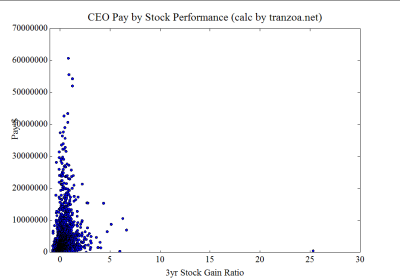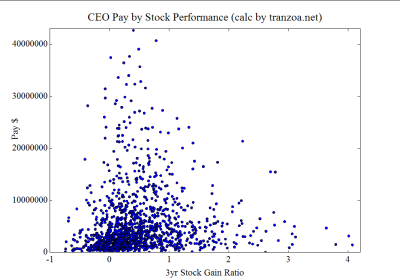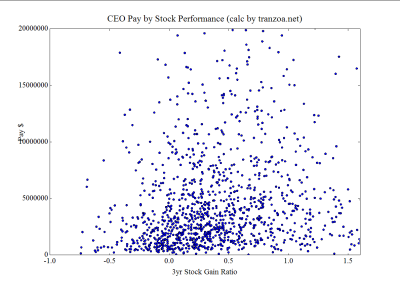With Google Books it’s easier than ever to read old stuff. Old magazine and newspaper writings give a fascinating perspective on modern times. Just translate the words in to modern syntax and such-like. Viola! You can find the same thing written a hundreds years apart.
The year 1789 was one of stagnation and financial embarrassment in France. The nation had a heavy debt and a serious deficit, and there was scarcity of money and a want of confidence. This was a time of trial and a test of statesmanship. There were those who saw that the evil could only be remedied by patience, careful management, and the strict adherence to established financial principles. But others, as Dr. White says, were “looking about for some short road to prosperity, and ere long the idea was set afloat that the great want of the country was more of the circulating medium; and this was speedily followed by calls for an issue of paper – money.” There was then a struggle. The dangers of such a course were vividly depicted on the one band, and on the other it was maintained that it would be the salvation of France. On the 19th of April, 1790. the finance committee of the French Assembly reported that “the people demand a new circulating medium;” that “the circulation of paper is the best of operations;” that “it is the most free, because it reposes on the will of the people;” that “it will bind the interests of the citizen to the public good.”
The Government had appropriated the vast property of the French Church, amounting in value to about four thousand million francs, and this was to be the security of the paper. Accordingly, in April, 1790, the “Government issued four hundred million francs in assignats — paper – money secured by a pledge of productive real estate, and bearing interest to the holder at three per cent” What could be more secure? It was maintained that such a currency would immediately prove itself better than coin.
“The first result of this issue was apparently all that the most sanguine could desire; the Treasury was at once greatly relieved; a portion of the public debt was paid; creditors were encouraged; credit revived; ordinary expenses were met, and the paper-money having thus been passed from the Government into the midst of the people, trade was revived, and all difficulties seemed past.”
Possibly, if the Government could have stopped with these temporary advantages, no great harm would have been done. But the difficulty about money is, that there is never thought to be enough of it. The benefit of real money (coin) is to set a stubborn limit to this universal want-it cannot be got without earning it or giving equivalent property for it. The curse of pseudo-money (irredeemable paper) is, that it panders to the universal greed because any amount of it can be manufactured and set afloat at any time. And so, of course, the French, after the first taste, wanted more. The further issue was stoutly resisted by the ablest men, but the current set so strong, and the demagogues were so plausible, that the measure was carried, and in September the Government issued eight hundred million assignats, “solemnly declaring that in no case should the entire amount put in circulation exceed twelve hundred millions.”
Great were the rejoicings on every side. Gold was to lose all value, as it was a superfluity, and the nation was committed to the policy of inflation. But the old cry of the “lack of a circulating medium” soon broke forth again. A hundred millions were issued under the plea of a want of small notes. On June 19, 1791, less than nine months after the former great issue, six hundred millions more were put in circulation. Next came depreciation of the currency, a loss of its purchasing power, and a rise in prices. Some said that this was due to ignorance in the rural districts, and the remedy proposed was “education of the people.” M. Prndhomtne’s newspaper, however, declared that “coin will keep rising until the people have hung a broker.” People naturally began to be alarmed, and to convert the paper into coin and hoard it up. This was regarded as criminal, and Marat asserted that death was the proper penalty for persons who then hid their money.
But, after the first stimulus of these issues, business soon became depressed, trade stagnated, the manufactories were closed, and thousands of workmen were discharged. Uncertainty and fluctuation of values followed, speculation set in, and, in the language of Louis Blanc, “commerce was dead; betting took its place.” “In the cities now arose a luxury and license which is a greater evil than the plundering which ministers to it. In the country the gambling spirit spread more and more; nor was this reckless and corrupt spirit confined to business-men; it began to break out in official circles; and public men who, a few years before, had been pure in motive, and above all probability of taint, became luxurious, reckless, cynical, and finally corrupt. . . . “Even worse than this was the breaking down of morals in the country at large, resulting from the sudden building up of ostentations wealth in a few large cities, and the gambling, speculative spirit fostered in the small towns and rural districts.”
There was no stopping now. The artificial quickening had gradually run into a feverish activity, followed by intoxication, which had grown into a regular national debauch. Every issue of paper – money had made matters worse. But so deep was the infatuation that multitudes of people insisted that if there were only enough paper – money all would be well. On December 17, 1791, a new issue was ordered of three hundred millions more, and on April 80, 1792, still another three hundred millions were thrown out. The currency was now depreciated thirty per cent, and in July of the same year another three hundred millions were emitted.” Issue after issue followed at intervals of a few months until, on December 14, 1792, we have an official statement that thirty-four hundred millions had been put forth, of which six hundred millions had been burned, leaving in circulation twenty-eight hundred millions.”
As articles of common consumption grew enormously dear, their holders became unwilling to sell them for the worthless currency with which France was flooded, and there then arose a demand that those who refused to make such exchanges should be punished with death. Laws were passed making the sales of goods compulsory at fixed prices in paper-money, which were, of course, inoperative. In 1793 there was an enactment forbidding the sale or exchange of specie for more than its nominal value in paper, under a penalty of six years’ imprisonment in irons; and then twelve hundred millions more of the inflated currency was thrown out. “Toward the end of 1794 seven thousand million assignats were in circulation. By the end of May, 1795, the circulation was increased to ten thousand millions; at the end of June, to fourteen thousand millions; at the end of July, to sixteen thousand millions; and the value of one hundred francs in paper fell steadily first to four francs in gold, then to three, then to two and a half.” The issues continued until, at the beginning of 1796, they amounted to over forty-five thousand million francs. One franc in gold was worth two hundred and eighty eight francs in paper-money; sugar was five hundred francs a pound, and carriage-hire six thousand francs a day in the legal currency. Debts were, of course, now easily paid.
The madness continued, but its form was diversified. In 1796 “it was decreed that no more assignats be issued ; instead of them it was decreed that a new paper-money, ‘fully secured and as good as gold’ be issued, under the name of ‘mandats.'” Choice public real estate was set apart to secure this money, but it speedily depreciated ninety-five per cent. It was decreed that those who refused to take it should be fined and sent to prison, and that those who even spoke against it should incur the same penalties. But the end at last came. On July 16, 1796, “it was decreed that all paper, mandats and assignats, should be taken at its real value, and that bargains might be made in whatever currency the people chose. The reign of paper-money in France was over. The twenty-five hundred million mandats went into the common heap of refuse with the previous thirty-six billion assignats. The whole vast issue was repudiated. The collapse had come at last; the whole nation was plunged into financial distress and debauchery from one end to the other.”



